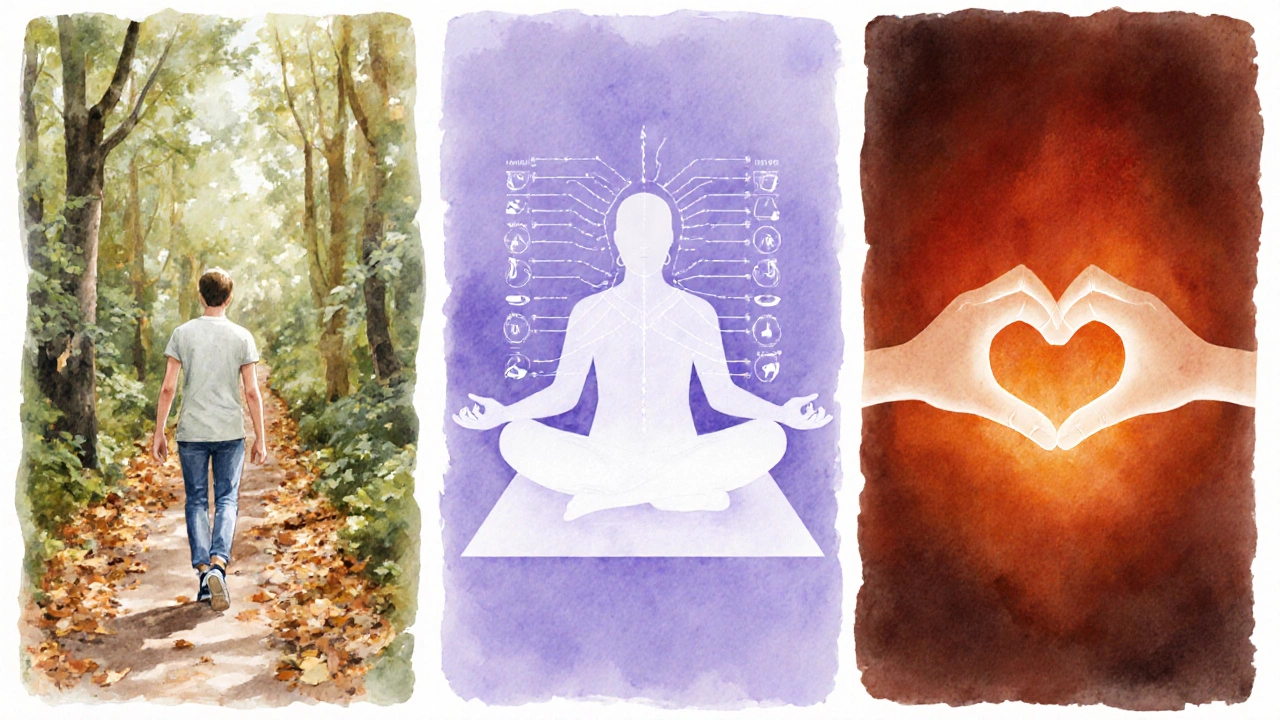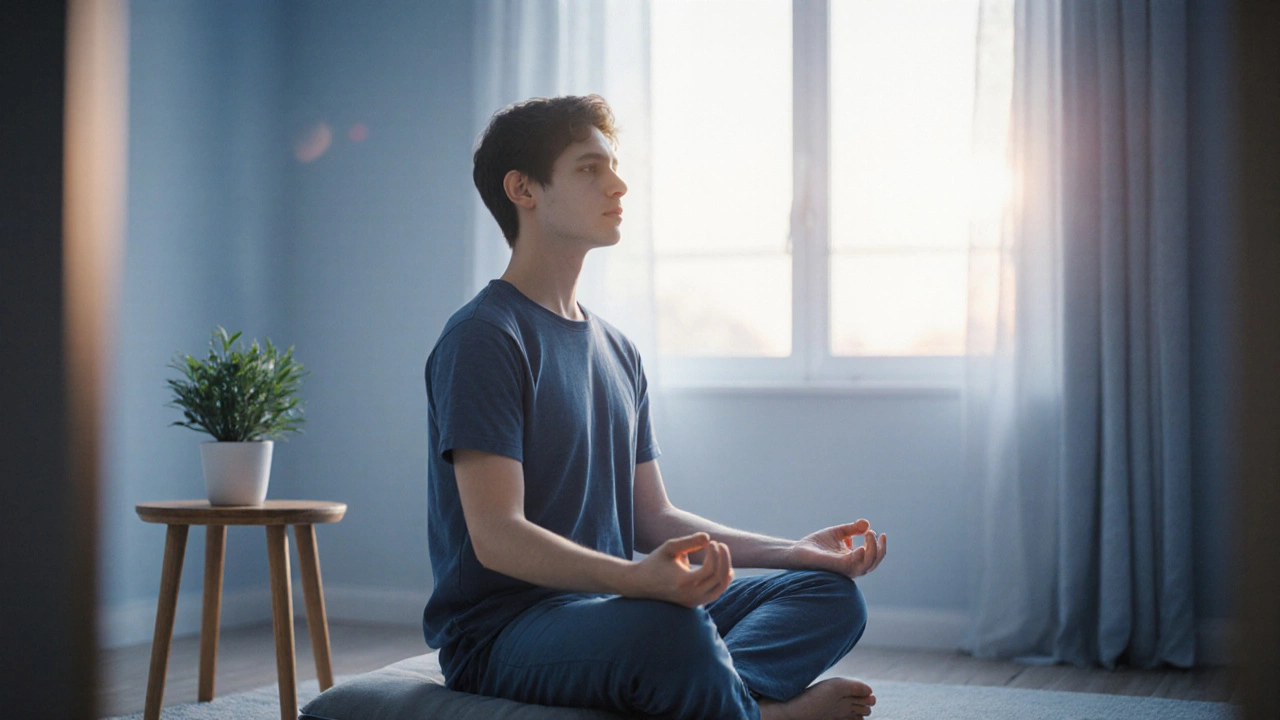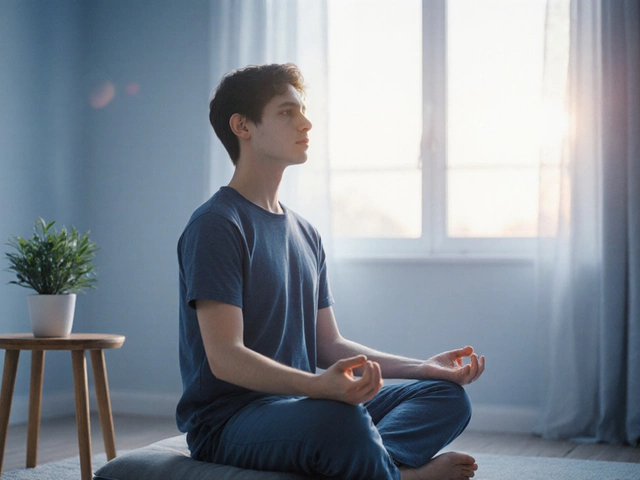Mindfulness Practice Finder
Find Your Perfect Practice
Answer a few questions to get personalized recommendations for mindfulness exercises that match your goals and schedule.
Your Recommended Practice
Breath Awareness
A simple technique focusing on the natural rhythm of your breath to calm the mind and reduce stress.
Duration: 5-10 minutes
Key Takeaways
- Mindfulness practices are simple, present‑moment exercises you can use anywhere.
- Common techniques include breath awareness, body scanning, walking meditation, and loving‑kindness.
- Regular practice improves stress resilience, focus, and emotional balance.
- Starting small-just a few minutes a day-helps build a sustainable habit.
- Avoid common pitfalls like judging yourself or trying to "empty" the mind.
What Are Mindfulness Practices?
When people ask “what are mindfulness practices?” they’re really looking for everyday tools that train the mind to stay in the now. Mindfulness practices is a set of mental exercises that cultivate present‑moment awareness, non‑judgmental acceptance, and a gentle curiosity toward thoughts, feelings, and bodily sensations. The core idea is that you bring full attention to whatever is happening right now, rather than replaying the past or worrying about the future.
Core Principles Behind Mindfulness
All mindfulness techniques share three basic ingredients:
- Attention: Directing focus to a specific anchor (breath, sound, movement).
- Awareness: Noticing whatever arises-thoughts, emotions, physical sensations-without trying to change it.
- Acceptance: Allowing experiences to be exactly as they are, even if they feel uncomfortable.
When you repeat these steps, brain regions linked to attention and emotional regulation become stronger, a change researchers call neuroplasticity.

Popular Mindfulness Practices
Below is a quick snapshot of the most widely used techniques. Each can be adapted to fit a busy schedule.
| Practice | Typical Focus | Ideal Duration | Best For |
|---|---|---|---|
| Breath Awareness | In‑and‑out breath | 5‑10min | Beginners, stress relief |
| Body Scan | Sequential attention to body parts | 10‑30min | Sleep issues, chronic pain |
| Loving‑Kindness | Generating compassion toward self & others | 5‑15min | Emotional resilience |
| Walking Meditation | Sensation of feet touching the ground | 10‑20min | Active minds, outdoor lovers |
| Mindful Eating | Taste, texture, chewing | During a meal | Weight management, relationship with food |
| Yoga (mindful flow) | Movement synced with breath | 15‑45min | Flexibility, integrated mind‑body work |
Each practice can be labeled as a mindfulness technique because it follows the three core principles described earlier.
How to Start a Simple Mindfulness Routine
Pick one technique that feels doable. Here’s a step‑by‑step guide for a basic breath‑awareness session:
- Find a quiet spot where you won’t be interrupted for 5 minutes.
- Sit upright, shoulders relaxed, feet flat on the floor.
- Close your eyes or soften your gaze.
- Take a slow inhale through the nose, counting to four.
- Exhale gently through the mouth, counting to six.
- Whenever a thought pops up, note it with a mental label-“thinking”, “feeling”, “planning”-and gently return to the breath.
- After the timer ends, open your eyes and notice any shift in mood.
If you prefer movement, swap the breath for a walking meditation. The same principle-focus, awareness, acceptance-applies, just with the sensation of each footstep.
Evidence‑Based Benefits
Research from universities around the world shows measurable gains after just eight weeks of regular practice. A meta‑analysis of 47 randomized trials reported:
- 20‑30% reduction in self‑reported stress levels.
- 15% improvement in attention‑switching tasks.
- Lower cortisol (the stress hormone) by an average of 15%.
- Higher scores on the “positive affect” scale of the PANAS questionnaire.
These outcomes aren’t limited to clinical settings. Office workers who added a 10‑minute mindfulness break reported a 12% boost in productivity, while students saw a 7% rise in exam scores when they practiced before study sessions.

Common Pitfalls & Pro Tips
Even seasoned practitioners hit snags. Recognizing them early keeps the habit alive.
| Pitfall | Why It Happens | Pro Tip |
|---|---|---|
| “My mind is too noisy.” | Expecting a completely blank mind. | Label thoughts instead of fighting them. |
| Skipping days. | Perfectionism kills consistency. | Commit to 2minutes on busy days-any practice beats none. |
| Judging performance. | Comparing yourself to meditation “gurus”. | Remember the goal is awareness, not mastery. |
Another tip: integrate mindfulness into routine activities. While washing dishes, notice the temperature of water and the texture of plates. This “micro‑mindfulness” builds the habit without carving out extra time.
Integrating Mindfulness Into Daily Life
Beyond formal sessions, mindfulness can colour everything you do. Here are three quick hacks:
- Tech pause: When you unlock your phone, take one breath before scrolling.
- Commute check‑in: During a bus ride, feel the vibrations under your seat.
- Meal moment: Before each bite, take a second to notice the aroma.
These tiny moments add up, creating a “mindful thread” that weaves through your day.
Frequently Asked Questions
Do I need special equipment to practice mindfulness?
No. Most practices only require yourself and a quiet space. A cushion or chair can add comfort, but it’s optional.
How long before I notice benefits?
People often report reduced stress after 2‑3 weeks of daily 10‑minute sessions. Cognitive benefits such as better focus may take 6‑8 weeks.
Can children practice mindfulness?
Absolutely. Simple breathing games or mindful coloring are effective for ages 5 and up.
Is mindfulness a religious practice?
Mindfulness originated in Buddhist meditation, but the secular techniques used today are non‑theistic and focus on mental health.
What’s the difference between mindfulness and meditation?
Meditation is a broader category that includes many methods (e.g., mantra, visualization). Mindfulness is a specific form that emphasizes present‑moment awareness without judgment.
Next Steps & Troubleshooting
If you’ve tried a few sessions and feel stuck, consider these adjustments:
- Change the anchor: Switch from breath to body scan or walking.
- Shorten the timer: Reduce to 2minutes on days you’re busy.
- Join a community: Virtual groups or local meet‑ups provide encouragement.
- Seek guidance: A certified mindfulness teacher can tailor practices to your needs.
Remember, mindfulness is a skill, not a perfect state. The moment you notice the mind wandering, you’ve already succeeded by bringing it back.







